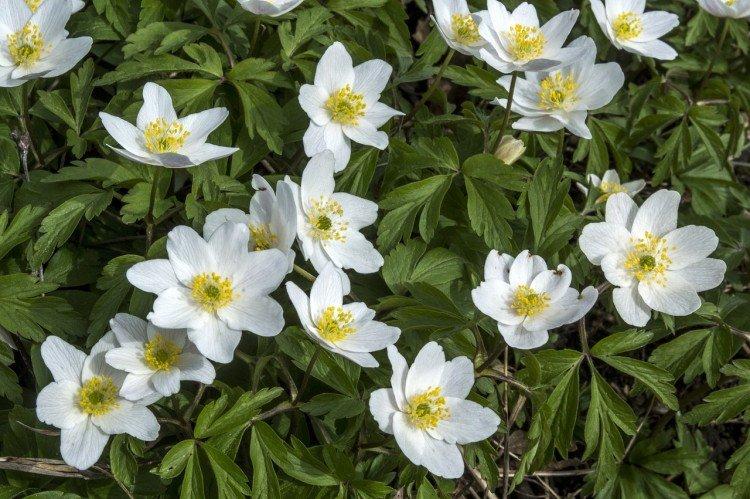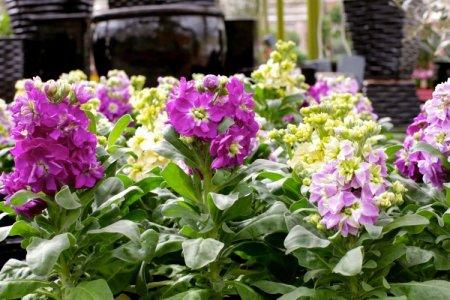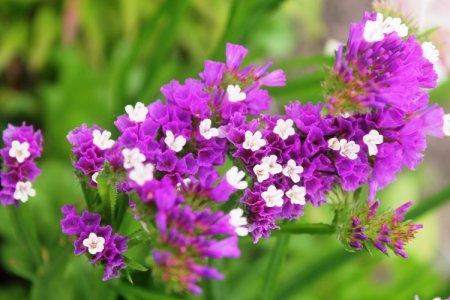
If you are looking for beautiful decorative flowers for a garden that will never give you any trouble, be sure to pay attention to the anemone. Why exactly on her? Because it is difficult to find something even more elegant and unpretentious at the same time!
general information
Anemone or anemone is a herbaceous perennial that belongs to buttercups. Literally the old Greek name of the flower means "daughter of the winds", and, most likely, this is due to the sensitivity of delicate petals to gusts and drafts.
It is very difficult to give a general description of the anemone due to the variety of its varieties. But they all partly resemble sea anemones, due to which the flower received its second name. Inflorescences consist of 2-9 umbrellas or single flowers. Height - on average ranges from 15 to 60 cm.

Types of anemone
The number of varieties of anemone is so huge that it is already difficult to count them. Moreover, all species differ significantly from each other in literally everything, starting from the type of root system. Today we want to tell you about the most popular of them!
Forest anemone
This is a medium-sized primrose up to 50 cm in height, distributed from the Crimea to Siberia. The strong vertical rhizome allows it to adapt to different conditions. On peduncles 1-2 large white flowers bloom.

Tender anemone
Tuberous undersized species up to 20 cm with spectacular dissected leaves and single inflorescences-baskets up to 7 cm in diameter. The delicate anemone is very graceful and rich in colors.

Oak anemone
Very common and one of the most unpretentious species. The main shades are white, cream, pink, lilac or even greenish. Terry varieties with bronze or purple leaves are very popular.

Buttercup anemone
A moisture-loving species with a creeping horizontal rhizome, graceful peduncles and small yellow flowers. Now there are multi-colored and terry varieties.

Rock anemone
A species that is just gaining popularity, but has already distinguished itself by its amazing decorativeness. Large snow-white buds with a purple bloom bloom on purple peduncles.

Blue anemone
The Siberian guest blooms in mid-May and pleases with its graceful beauty for several weeks. It grows very quickly, and during the season it is covered with blue single flowers up to 2 cm in diameter.

Caring for anemone
When planting an anemone, it is important to choose the right site and provide it with a suitable wintering place. And be sure to take into account the specifics of a particular variety, because the nuances are very different!
Temperature and lighting
Forest anemones prefer shade, coolness and moderate temperatures. Shade-tolerant varieties thrive under trees or surrounded by lush shrubs. But the Mediterranean species need warmth and a lot of light.

Watering
In most cases, the anemone does not need additional watering, because it has enough natural rainfall. But during periods of prolonged drought, it is better to add quite a bit of moisture and mulch the soil around.

The soil
All anemones, except for forest varieties, need loose fertile soil. But forest grows well even on poor sandstones. Acidity requirements are highly species-specific.

Fertilizers and feeding
Anemone should not be fed with manure, because the root system may be damaged. Also, you cannot fertilize it in the first year. But starting from the second, you can add liquid mineral and organic compounds during the period of bud formation.

Transfer
Anemone grows and spreads rather quickly. Therefore, if the shape of the flower bed is important to you, but individual flowers are knocked out of it, you can safely transplant them right at the height of the season.

Dormant period
The anemone needs a dormant period, so after flowering, you need to dig out the rhizomes, dry them, move them into wooden boxes, and leave them at temperatures up to +5 degrees. They are transplanted into the garden in early spring. Although varieties that fade early can be transplanted into the soil before winter - they will have time to rest in the fall.

Planting and breeding
Anemone does not reproduce well by seeds because it germinates and develops slowly. In addition, you need to constantly alternate between warm and cold periods - and this is quite difficult and inconvenient. But in nature, as they grow, self-seeding develops well.
It is easier to plant an anemone with tubers. First, in a flowerpot at a temperature of up to +12 until the first sprout appears, and only then - in everyday conditions indoors. Tubers can be transplanted into open ground when the temperature in the room and outside becomes approximately the same. In the process, do not let the earth dry out.
Varieties with a branching root system are propagated by its segments. In fact, the rhizomes themselves disintegrate when excavated after flowering, and their adventitious roots gradually grow on these parts. Most varieties bloom safely the next year.
Tuberous anemone can also be propagated by dividing the tuber. It is neatly divided into parts with 2-3 independent buds by about the end of summer. But varieties with a vertical rhizome are propagated by dividing the entire bush in early spring.

Pest and disease control
Anemone leaves are often affected by leaf nematodes. They are covered with yellow-red darkening spots, and gradually the whole plant dies, because the parasites penetrate directly into its tissues.
If the lesion is small, radically remove all damaged areas. Otherwise, we advise you to destroy the entire plant and replace the soil. Otherwise, anemone has excellent disease and pest resistance.

Anemone - photo
At first glance, the flowers of the anemone are quite simple - the middle and 5-6 petals. But how much this picture is transformed when there are many flowers!



























